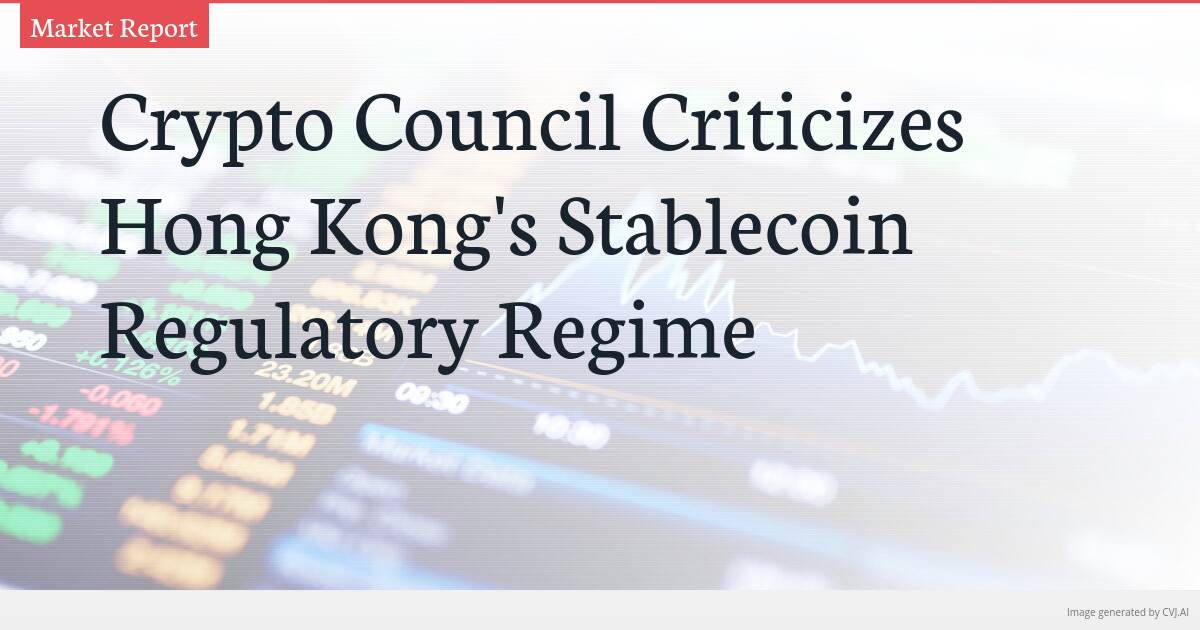This summary text is fully AI-generated and may therefore contain errors or be incomplete.
The Crypto Council for Innovation Critiques Hong Kong’s Proposed Stablecoin Regulatory Regime
The Crypto Council for Innovation (CCI) has submitted a comment on the proposed stablecoin regulatory regime in Hong Kong, expressing substantial criticism of the proposed reserve and operational requirements. The advocacy group’s five-page letter also defended algorithmic stablecoins, which have faced skepticism from Hong Kong authorities.
Proposed Regulatory Framework and CCI’s Response
The Hong Kong Monetary Authority (HKMA) and Financial Services and the Treasury Bureau (FSTB) released a consultation paper outlining a regulatory framework that would require stablecoin issuers to obtain a license, maintain an office in Hong Kong with senior management present, and hold reserves “at least equal to the par value.” While the CCI commended the authorities for taking initial steps in crafting a regulatory regime, it raised concerns about potential challenges, particularly regarding reserve requirements and the physical presence of senior management and key personnel in Hong Kong.
- The CCI suggested a risk-based approach to reserve requirements and recommended an “equivalence framework” harmonized with other jurisdictions to facilitate the operation of issuers in Hong Kong.
- The letter also emphasized the need for a differentiated approach to algorithmic stablecoins, highlighting the importance of tailored guardrails and related requirements for this category of innovation.
Algorithmic Stablecoins and CCI’s Perspective
The CCI dedicated a significant portion of its letter to discussing algorithmic stablecoins, asserting that the proposed regulatory regime would treat all stablecoins equally. It argued that an algorithmic stablecoin would struggle to meet the proposed licensing criteria due to its inability to fulfill reserve requirements. Despite the reputational challenges faced by algorithmic stablecoins following the collapse of the Terra/Luna ecosystem, the CCI expressed optimism about their potential, advocating for a nuanced approach to regulating them.
- The CCI highlighted the benefits of overcollateralized stablecoins with exogenous collateral, emphasizing their potential to enhance efficiency in decentralized finance through real-time auditability and automated liquidation systems.
- It recommended the establishment of “decentralization thresholds” for algorithmic stablecoins, underscoring the importance of decentralization in determining their benefits.
Stablecoins Tied to Cryptocurrencies
Additionally, the CCI voiced support for stablecoins tied to cryptocurrencies, citing examples such as DAI, RAI, and LUSD, which are backed by Bitcoin and Ether. It highlighted the resilience of these stablecoins during a recent market downturn, emphasizing their potential to provide stability in the cryptocurrency market.
Conclusion
The CCI’s comment on Hong Kong’s proposed stablecoin regulatory regime reflects a nuanced perspective on the challenges and opportunities associated with regulating stablecoins and, in particular, algorithmic stablecoins. The advocacy group’s recommendations for a differentiated approach to regulation and the recognition of the unique characteristics of various stablecoin categories underscore the complexities involved in crafting an effective regulatory framework for the evolving cryptocurrency landscape.
📎 Read the original article on cointelegraph.com


